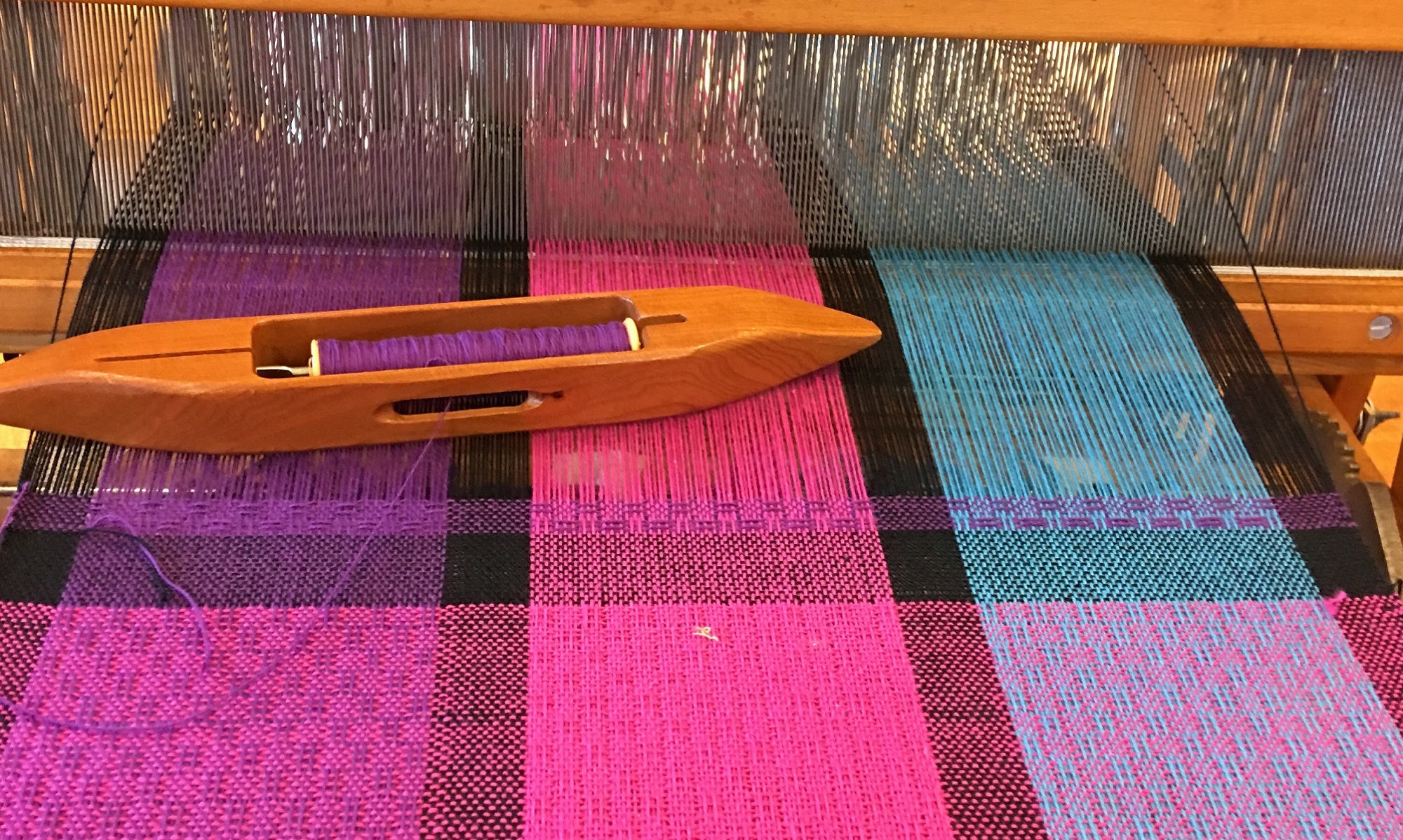 I recently returned from a vacation to the Red River Gorge area of Kentucky. We decided to make a little detour to the town of Berea on our way home. Berea has a lively artisan community, due in great part to the presence of Berea College where admitted students (primarily low income student from Appalachia) can attend tuition free by working 10-15 hours a week in the Student Crafts program. They are producing traditional Appalachian style crafts in ceramics, woodworking, jewelry making, broom making, basket making and of course, weaving, which is the heart of their Student Crafts program.
I recently returned from a vacation to the Red River Gorge area of Kentucky. We decided to make a little detour to the town of Berea on our way home. Berea has a lively artisan community, due in great part to the presence of Berea College where admitted students (primarily low income student from Appalachia) can attend tuition free by working 10-15 hours a week in the Student Crafts program. They are producing traditional Appalachian style crafts in ceramics, woodworking, jewelry making, broom making, basket making and of course, weaving, which is the heart of their Student Crafts program.
 I visited the weaving studio and talked for over an hour with Amy Judd, the Weaving Supervisor. She graciously showed me around and we talked about looms and weaving for over an hour. Amy shared with me some of the unique problems of running a large production studio that the usual home weaver doesn’t have. (Trying to get enough yarn of the same dye lot to warp 100 yards for a blanket warp!) I got some tips on warping my sectional beams on my looms from one cone of yarn rather than multiple packages by using a tension box with a chained warp that is two or three times the length of my needed warp. She fired up the AVL loom to show me the student designed draft they were working on for bread cloths with 10/2 cotton which will be a new item in their line of products. They weave two items side by side with cutting lines and sewing lines so they can have fringe on all 4 sides.
I visited the weaving studio and talked for over an hour with Amy Judd, the Weaving Supervisor. She graciously showed me around and we talked about looms and weaving for over an hour. Amy shared with me some of the unique problems of running a large production studio that the usual home weaver doesn’t have. (Trying to get enough yarn of the same dye lot to warp 100 yards for a blanket warp!) I got some tips on warping my sectional beams on my looms from one cone of yarn rather than multiple packages by using a tension box with a chained warp that is two or three times the length of my needed warp. She fired up the AVL loom to show me the student designed draft they were working on for bread cloths with 10/2 cotton which will be a new item in their line of products. They weave two items side by side with cutting lines and sewing lines so they can have fringe on all 4 sides.
She also sat down at the loom with the fly shuttle, automatic advance and a sandpaper beam and roller system to show me how it worked.
This set up allows them to put on very long warps for production weaving. They do not wind the finished cloth onto a beam, but let it hang down until it is finished. Space is left for fringe and the weaver begins the next blanket. The blankets can be cut off as they are woven without having to retie the warp to a cloth beam, it is just held under tension between the beam and roller in front and never has to be retied. This is a great time-saver.
 You can see the woven cloth hanging loosely in this picture on the left. It takes a path between the sandpaper beam and a lower roller and keeps the tension on the warp that way.
You can see the woven cloth hanging loosely in this picture on the left. It takes a path between the sandpaper beam and a lower roller and keeps the tension on the warp that way.
 The studio has certain looms set up for certain projects and always tie the new warp onto the old one so that they don’t have to re-thread the heddles each time and introduce threading errors in the new warp. In this photo on the right, one of the student workers is tying on a new placemat warp.
The studio has certain looms set up for certain projects and always tie the new warp onto the old one so that they don’t have to re-thread the heddles each time and introduce threading errors in the new warp. In this photo on the right, one of the student workers is tying on a new placemat warp.
If you are interested in buying their products, you don’t have to go to Berea (although I highly recommend a visit there). You can purchase their handcrafted items online.
















